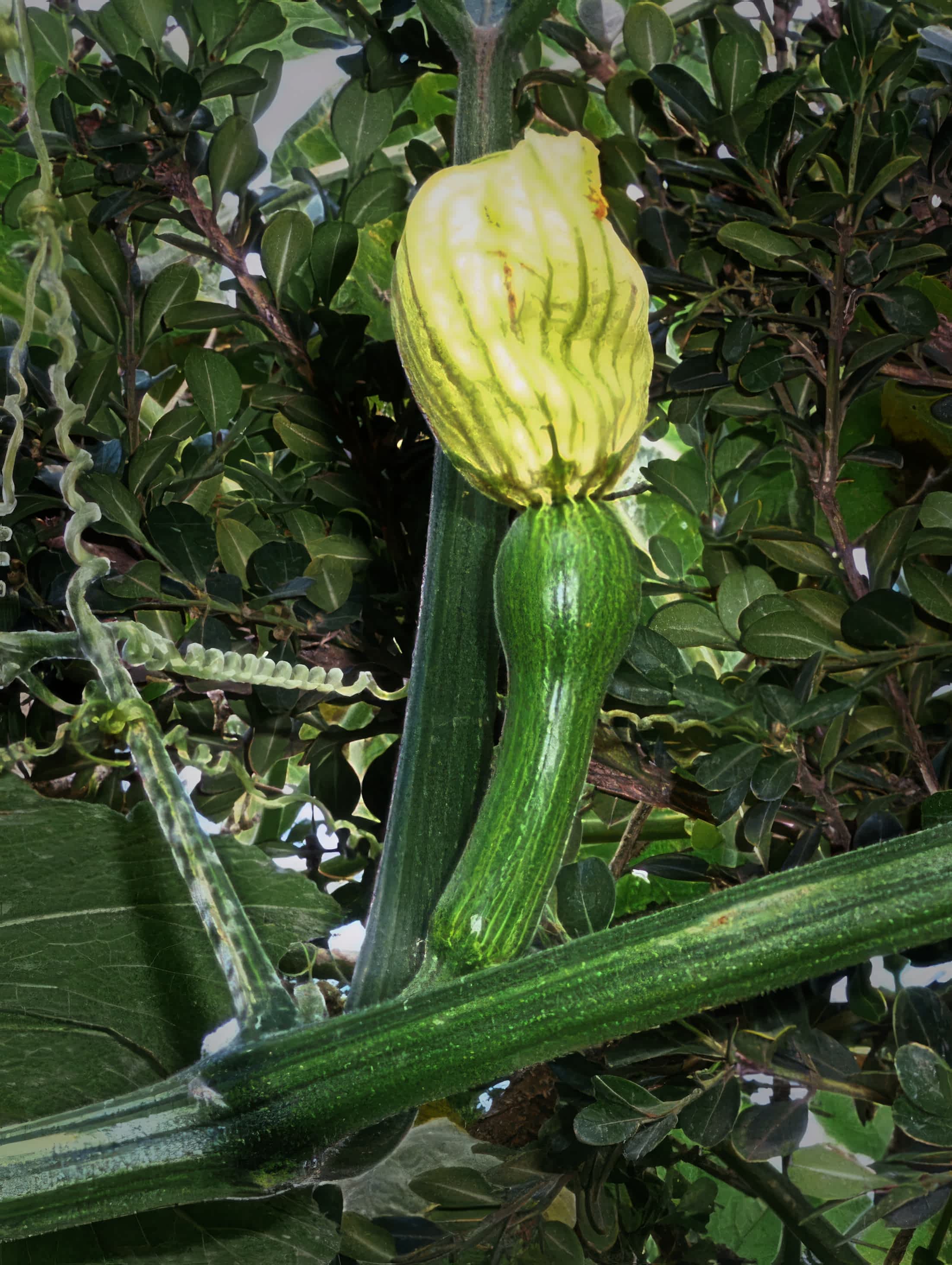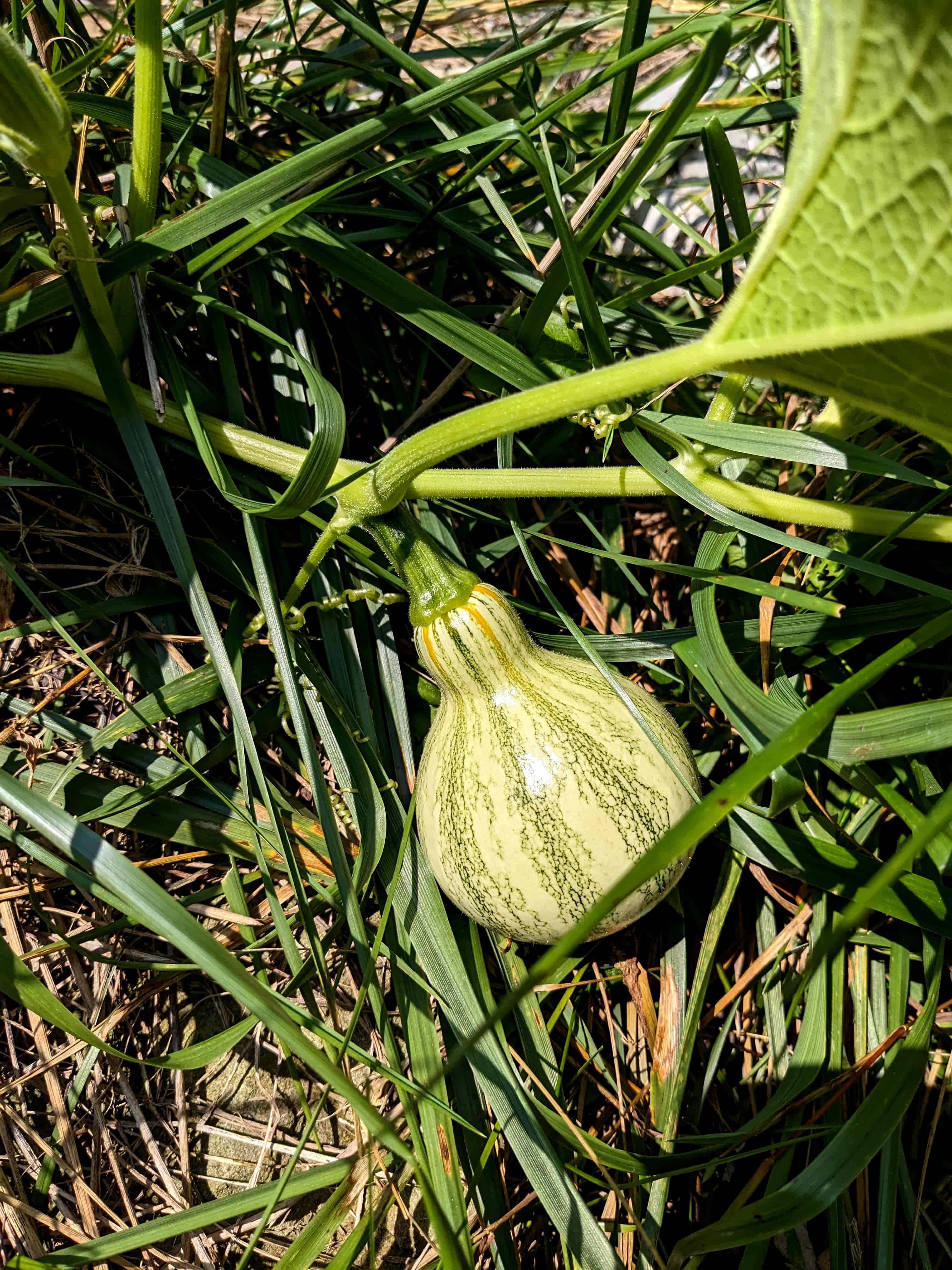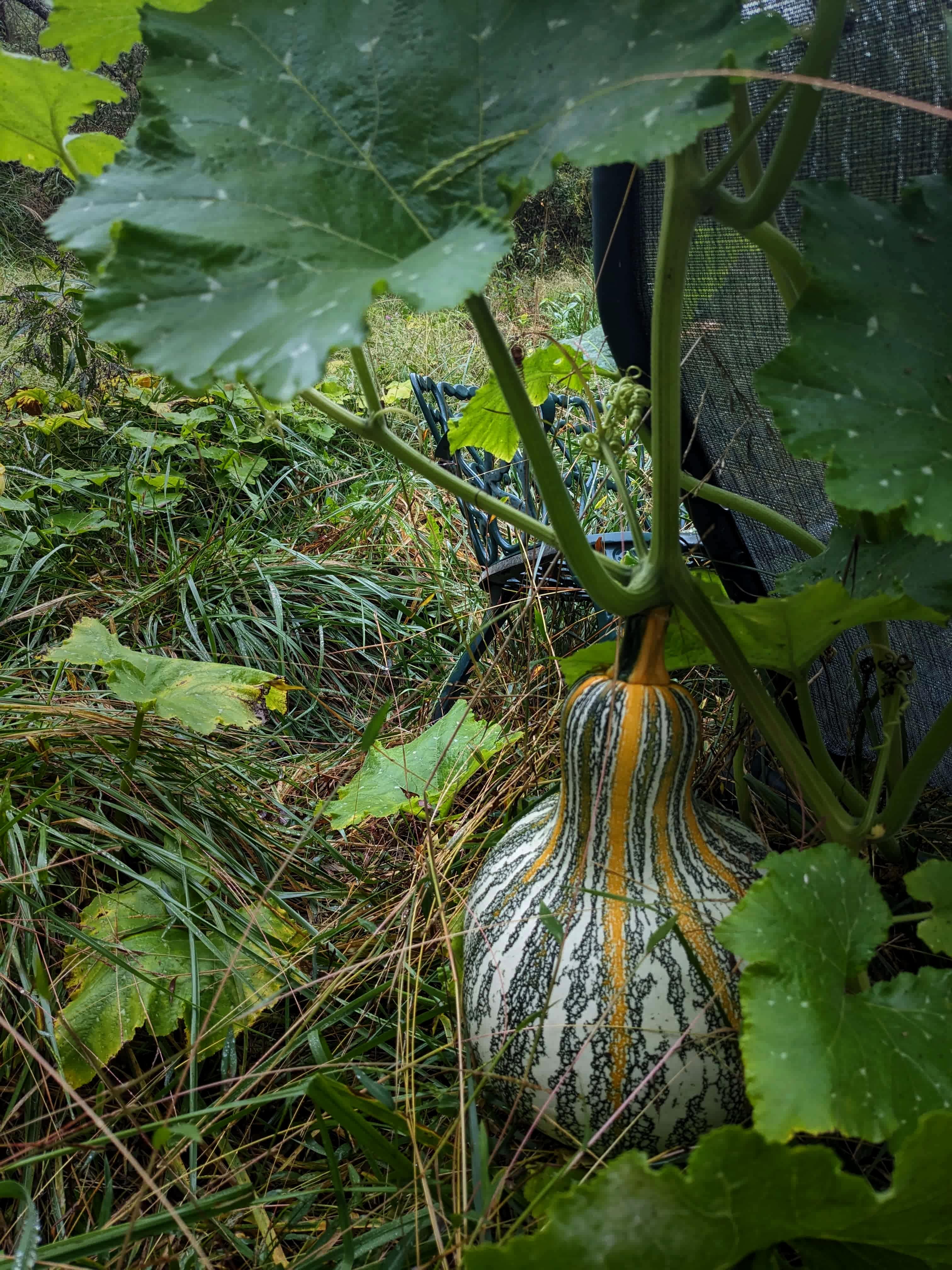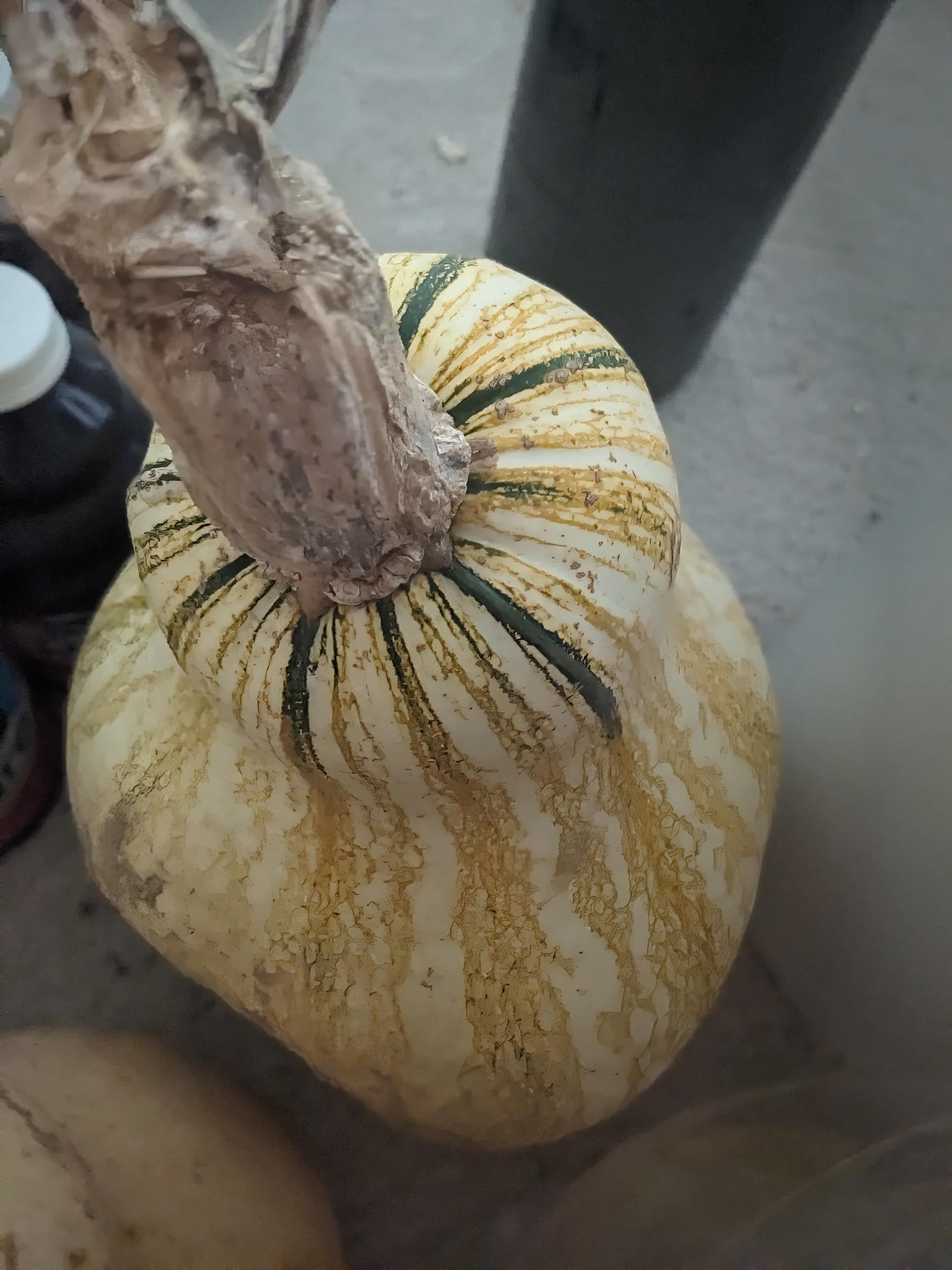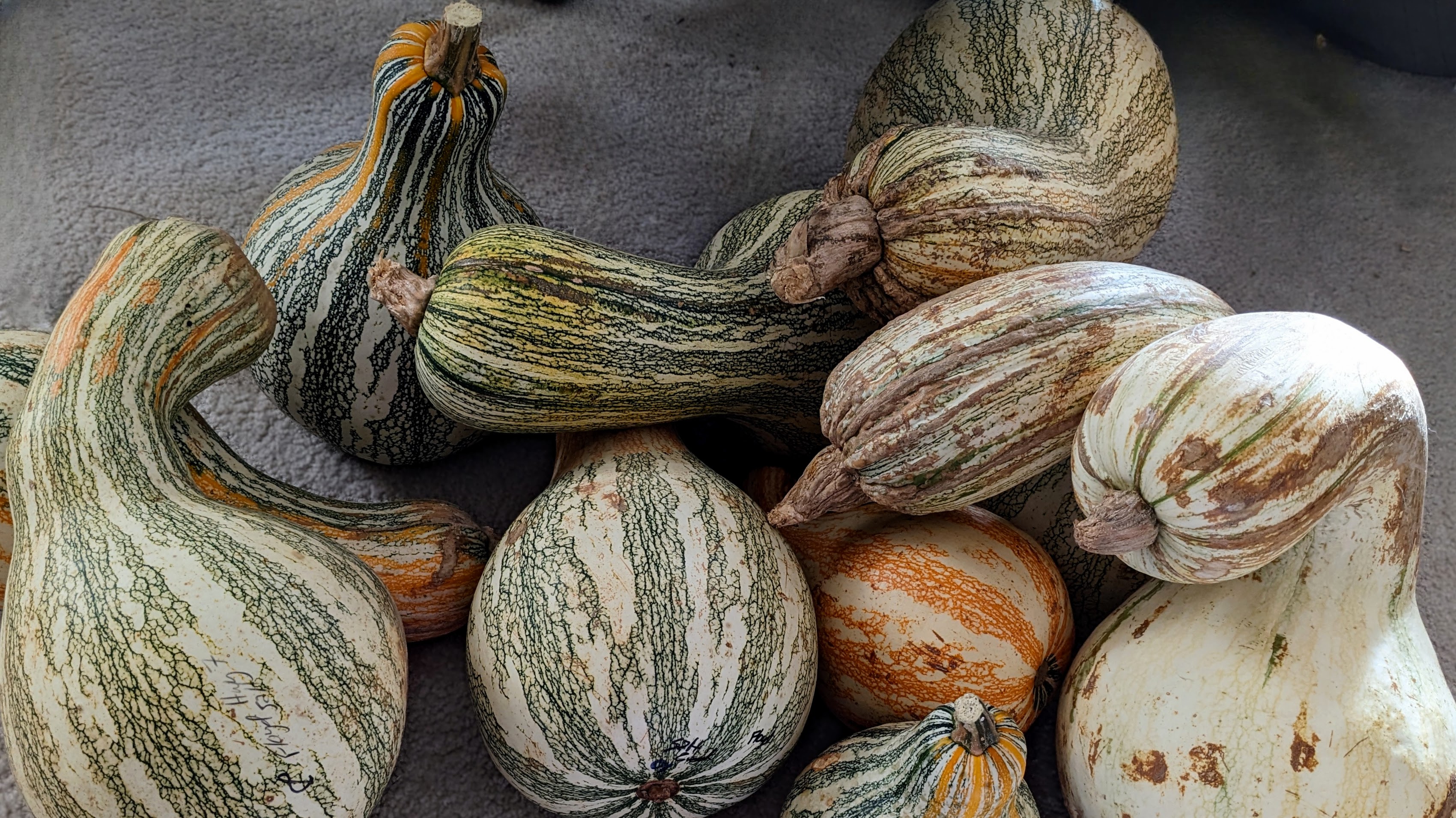Harvesting
Handling raw squash triggers dermatitis or “squash hands” for some people.
Many parts of squash plants are edible, which means the harvest can begin early in the season:
- Squash vine tips are clipped and used as greens in cooking.
- Both male and female flowers are eaten in several ways.
- Immature fruits can be eaten as summer squash during the season, or when frosts are in the forecast and not all fruit will reach maturity.
Blossoms, leaves, and vines
Cushaw blossoms can be enjoyed raw or cooked throughout the season. Young leaves and tips of the vines are also eaten.
C. argyrospemera cushaws are believed to generally be less sensitive to cold than C. moschata winter squash. They are generally more sensitive to cold than C. ficifolia, C. maxima, or C. pepo squash.
Summer squash
Cushaws can be used as summer squash for about two weeks after the flower is pollinated. Cut the peduncle, or stem, about an inch above the fruit.
Mature seeds
The minimum safe age to harvest seeds for planting next season is 60 days after pollination. More time on the vine can improve seed vigor and eating quality. The section on Selection explores the process of identifying good seeds for next season’s planting.
Winter squash
The eating and storage quality of fruit on the vine may continue to improve as long as 90 days after pollination. One sign that winter squash is done ripening on the vine is that the stem may become brownish and start to dry. If the vine is healthy, and the peduncle attached to the fruit is still fleshy and hydrated, then the vine is still providing nourishment.
Planning for frosts and freezes
Some growers in temperate climates harvest mature fruit for winter squash after the first mild frost when the vines die back. If a freeze is predicted, it is better to harvest exposed fruit in advance.
How to harvest
Cut the peduncle 1 - 3 inches above the fruit. Do not use the peduncle, or stem, as a handle, and leave it attached to the fruit. Peduncle removal may allow insects or disease to enter the fruit, reducing its storage life.
Curing and storage
Curing
Fruit should be cured 5 - 7 days in warm, ventilated air (80° Fahrenheit is ideal), outdoors or indoors.
Storage and inspection
Seeds continue to mature in storage. Store fruit for a month before removing seeds, especially if it was harvested early. Over the winter, fruits should be periodically checked for soft spots or mold. Eat those starting to spoil first.
Freezing raw fruit
Winter squash cushaws can be cut and frozen raw. You might store a large fruit for months at room temperature. Then when the fruit is first needed, cut and clean the whole cushaw, freezing half for later use.
Select for good “winter squash” traits such as good eating quality and long storage by saving seeds from the best-tasting, longest-lasting fruits.
